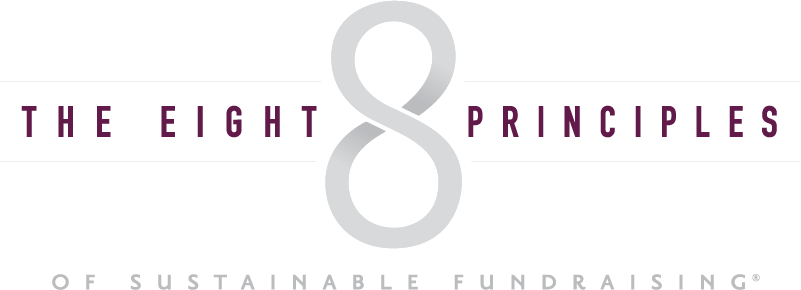
Sustainable fundraising is all about meeting donors where they are. Solicitations, your most important donor communications, are most effective when your donor feels you really understand what they care about, what they have to give, and the impact of their gift.
The best way to assure your donors, especially your major donors, that you truly understand where they’re coming from is to let prospect research guide your donor communications. That’s the spirit of Principle 4: Learn & Plan™!
Prospect research is a process undertaken by fundraisers to identify donors with the ability and propensity to give major gifts to a particular organization. During this process, prospect researchers use a variety of databases to find information that statistically points to a high wealth profile and a charitable spirit.
If you want your donors to respond positively to your solicitations, you have to ask them to contribute to projects they care about in ways they can. Prospect research zeroes in on your ROI, ensuring that your asks are as effective as they can be by:
- Analyzing ability and propensity to give.
- Identifying areas of interest.
- Guiding your outreach plan.
Prospect research is the last puzzle piece to take your fundraising strategy to the next level. If you’re ready to get started, read on!
1. Analyzing ability and propensity to give.
One of the best ways to get your solicitation ignored is to ask for more than a donor can give.
Asking for too much isn’t just harmful because it can result in lower numbers for your current campaign — donors might assume they can’t support your nonprofit at the level you need, so they might tune out future solicitations, too. You don’t want to ask for too little, either, and leave gifts on the table.
Determining how much to ask requires finding out how much your prospective donor has to give, a process called wealth screening. During the wealth screening process, prospect researchers look for public markers of wealth such as:
- Value of real estate and stock ownership
- Value of political contributions
- C-level position or business ownership
When crafting solicitation messages to send to these donors, having a better-than-general idea of how much you can ask greatly increases your chances of actually getting a donation in reply.
But you can’t just rely on wealth markers. A wealthy person is not always a charitable one.
To narrow down the list, prospect research also incorporates philanthropic indicators, or patterns in a prospective donor’s history that point to a charitable spirit. Some of the most common philanthropic indicators are:
- Past involvement with nonprofits, including donations, volunteering, and serving on a nonprofit board.
- Real estate ownership, since owning more than $2 million in real estate makes a person 17 times more likely to give to charity.
- Political giving, since political donations of more than $2,500 correlate to a 14-fold increase in likelihood of charitable giving.
- Affiliation with businesses and associations that regularly donate to charity.
- Public support of charitable causes, such as in op-eds or on social media.
A good prospect research strategy will identify those donors who have both the resources to make a major gift and the interest in doing so.
2. Identifying areas of interest.
There are so many options for charitable giving, even when you find donors with wealth and an interest in philanthropy. So how do you ensure that they choose to support your organization?
First, you need to identify the prospective donors that have demonstrated an interest in the specific cause your nonprofit supports.
Prospect research can help! Just look at the different kinds of information, found through careful prospect research, university fundraising experts use to engage their alumni:
- Leadership positions.
- Clubs and associations.
- Community service participation.
- Major(s) and minor(s).
- Honor societies.
- Greek organizations.
- Study abroad experiences.
- Independent research subjects.
- Cohorts or internships.
Any connection between a potential donor and your organization is a valuable one, even if it’s something as small as a disaster relief text-to-donate campaign to benefit a country they visited for a semester. These connections are how you get prospective donors interested.
But a compelling cause or personal connection alone isn’t always enough to engage your prospective donors.
You need to provide them with a way to participate that speaks to them. Although sending in a donation is the most straightforward way to support a nonprofit, there are many other avenues to consider that might be better aligned with their interests, including:
- Participating in group volunteering.
- Attending fundraising events.
- Participating in a crowdfunding or peer-to-peer campaign.
- Securing a corporate sponsorship.
- Assisting with outreach.
- Serving on the board.
The key is offering the right opportunities to the right potential donors, which is where prospect research comes in handy. If you discover that your prospect has started or donated to a crowdfunding campaign before, for example, invite them to participate in your next crowdfunding campaign.
You shouldn’t depart completely from the fundraising strategies that work for your nonprofit just because you think a few potential donors might be tempted to participate. However, discovering that many promising prospects have enthusiastically supported a specific kind of fundraising event in the past might be reason enough to give it a try.
3. Guiding your outreach plan.
You’ve found donors with the ability and capacity to give, and you’ve got the perfect causes and ways to give that will appeal to them. Now it’s time to make the ask.
Chances are, these potential donors you’ve identified are also on other nonprofits’ lists. The wrong kind of solicitation can go unseen, be ignored, or get deleted. You need a way to make sure your message is clear and attention-grabbing.
To start, you have to choose the right communication method. You have plenty of options, each with their own benefits:
- Direct mail: It’s harder to ignore physical fundraising letters that arrive in your mailbox than virtual messages. Plus, there’s a personal touch to a handwritten or signed letter that’s impossible to convey through a screen.
- Email or text: Electronic communication is quicker and cheaper than a letter sent through the mail. It’s likely, though, that your donors are receiving a much higher volume of these messages, so your message has a good chance of getting buried.
- Phone calls: Any member of staff can make a phone call, even volunteers, as long as you have an organized database that provides all the relevant prospect details for whoever manages the phones that day.
- In-person meetings: Reserved for the prospective donors you’re planning on asking for the highest level of commitment, an in-person meeting gives your staff a chance to answer questions and read your prospect’s reactions in real time.
(Hint: whether you’re writing a letter to print and mail or send over email, start with these tried-and-true templates from Fundraising Letters!)
Once you’ve chosen your method of communication, you need the right delivery.
Always leverage any relevant connections to your nonprofit you discovered in your prospect research to ensure the success of your solicitations. Reference specific campaigns that have supported causes prospects have demonstrated interest in, and make sure to address prospects by their preferred name and title.
Personal or professional connections between prospects and your staff members, board members, or major donors are especially valuable. Anyone is more likely to respond to an email or a phone call from a friend or business acquaintance than from a stranger.
Prospect research is the fundraising first step to ensure that your donors are so happy supporting their passions through your organization that they’ll return again and again. Take the time to do your research.

Bill Tedesco is a well-known entrepreneur in the field of philanthropy with over 15 years of experience leading companies serving the fundraising profession.
Bill has personally conducted original research to identify markers of philanthropy and has developed modeling and analytical products that use those markers to accurately predict future giving.
Since 2007, Bill has been the founder, CEO and Managing Partner of DonorSearch. DonorSearch is a proud corporate partner of The Eight Principles.


